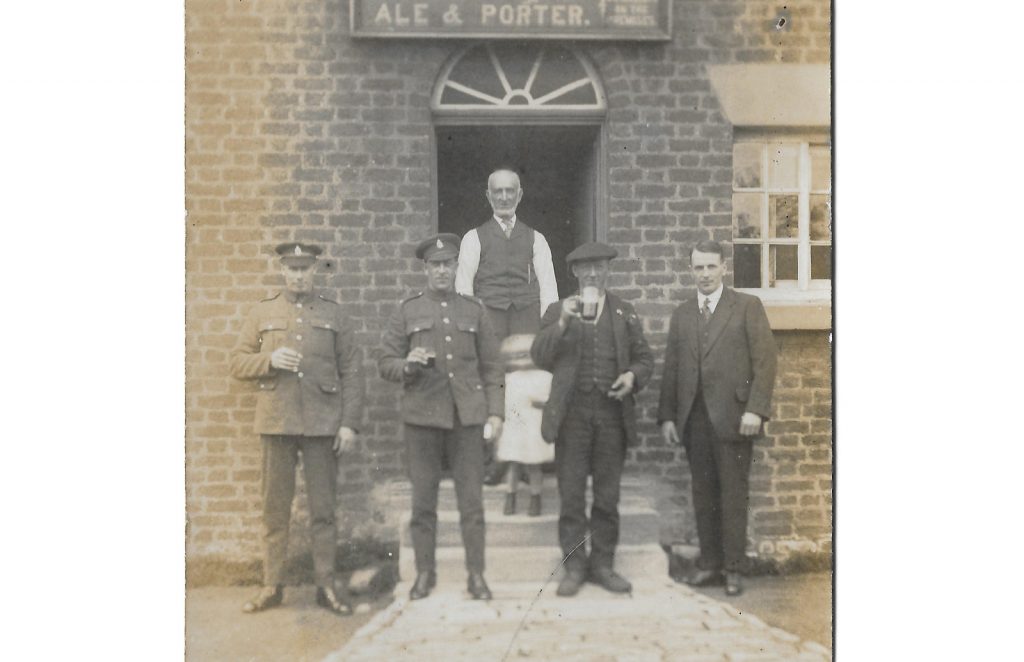This blog is part of a HLF funded project to ensure the legacy of those who worked and were treated at Moss Side Hospital in Maghull are not forgotten during the centenary commemorations of the Great War. You can read more about the project by clicking here.
Part 2: Ancillary Staff
Part one of this blog post, detailed the differences between male and female nursing staff at Moss Side military hospital, as highlighted by an analysis of the staff members mentioned in the hospital Minute Books now held at Liverpool Records Office. Part two of this blog, will describe the differences between male and female ancillary staff.
Male Ancillary Staff
Analysis of the duration of service of the male ancillary staff shows that the 74 men within this subset collectively provided 15,365 days of service. These include:
- bricklayers
- porters
- joiners
- electricians
- an upholsterer
- farm labourers
- teamsters on the farm
- pony boys
Their days of service are more complicated to account and many of these staff have short but repeated periods of service. However, 21.62% provided 30 or fewer days of service. A significant proportion, however, had a sustained connection. 54.04% were in service for 90 days or more, and 17.56% were in service for a year or more. The impact of male ancillary staff volunteering ‘to serve the colours’ also became a pressing issue in the Minute Books and affected male ancillary staff as much as the male nursing staff.
John E. Bromilow was a bricklayer who was regularly contracted and came to work at Moss Side Military Hospital on at least five occasions. Sometimes his work lasted for a matter of days, sometimes for a series of weeks. The same applies to Sydney Profett, an Upholsterer.
William Aspinall began as a farm labourer but quickly took on the role of teamster. Over a period of 881 days, he was appointed to work at the hospital farm at least four times. The work patterns of the farm workers are clearly connected to the seasonal needs of agriculture. Private Robinson was a soldier on ‘special leave’ in March 1917 who may have been called back for agricultural work. A curious and surprisingly short period of service was given by Lance Corporal Cushion, termed a ‘soldier gardener’, who was appointed and left service at the hospital on the same day, 8 April 1918.
Two male ancillary staff are identified as having left service to enlist. Alfred Thomas Hedges, a Stores Porter with 807 days of service between November 1914 and July 1917, must have been a well-known character at the hospital, having been there from the very start of its military role. J Cobham, a temporary farm labourer, was in service for 83 days at the hospital, leaving in October 1915. It was noted in the Minute Books that he had been killed in action. This is probably Corporal A J Cobham, 1st King’s (Liverpool Regiment), son of Mrs Sarah Cobham, Damfield Lane, Maghull, killed in action 22 April 1918.
Female Ancillary Staff
An analysis of the duration of service of the female ancillary staff provides the following patterns. The 66 women collectively provided 17,893 days of service. These include:
- maids
- laundry workers
- sewing maids
- cleaners
- kitchen staff
- ‘Lady Clerks’.
15.15% provided 30 or fewer days of service. A significant proportion, however, had a sustained connection; 68.18% were in service for 90 days or more, and 30.30% were in service for a year or more.
F.M. Bamford is an interesting case, absconding from the hospital after two days. At the other extreme, Florence White, sister of Elizabeth White, was a VAD member who served as assistant cook from October 1916 and was promoted to cook in January 1917. She served for 1113 days. Elizabeth Beeston was a VAD assistant cook who only managed 13 days service after her appointment on 27 January 1917, but Winifred Withers, again a VAD member and appointed on the same day, served 611 days.
These details offer an opportunity to make connections between the lives the staff led inside and outside the hospital. The duration of service was affected by many variables, but the impact of enlistment is clearly shown. Short-term service may well have affected the efficiency of the hospital, however, once, staff had sustained three months of service, they tended to remain.
One individual that requires much thought is, of course, Mary Dendy, the only woman on the Moss Side Committee, and the subject of an upcoming blog post!
Written by: Adam Cree
Edited by: Amy Walling, Manchester Metropolitan University
Posted on 7 June 2018 under Moss Side Military Hospital







